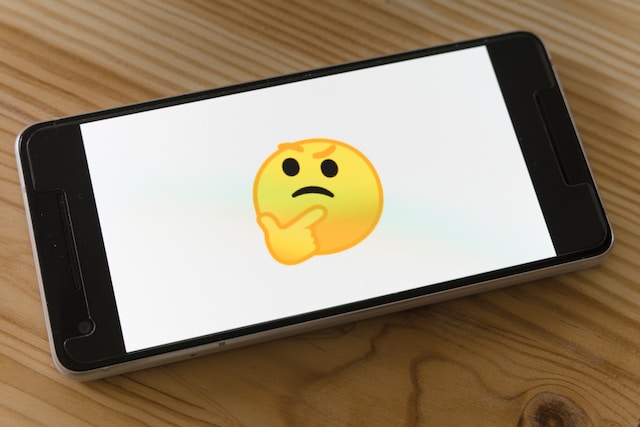Thinking is a natural and necessary cognitive process that allows us to analyze situations, solve problems, and make informed decisions. Worrying is an unproductive habit that often leads to anxiety and stress.
What is thinking?

Thinking is a fundamental cognitive process that allows us to process information, make decisions, solve problems, and analyze situations. It encompasses the ability to use our intellect and reason to explore ideas, generate alternatives, and evaluate possibilities.
When we engage in thinking, our minds actively seek out new perspectives and insights. We ponder different angles of a situation or an issue, considering various factors and potential outcomes. Thinking involves conscious awareness and deliberate mental effort as we examine facts, gather evidence, weigh pros and cons, and arrive at logical conclusions.
It’s important to note that thinking doesn’t always have to be serious or analytical; it can also involve imaginative thoughts or creative musings. Our minds are capable of generating new ideas, visualizing possibilities beyond what currently exists. This kind of thinking fuels innovation and helps us develop fresh concepts or solutions.
What is worrying?

Worrying is a common human experience that we all go through at some point in our lives. It can be defined as a state of unease or anxiety about something that may or may not happen in the future. When we worry, our minds are consumed by negative thoughts and what-if scenarios.
Worrying often involves excessive thinking about potential problems, uncertainties, or fears. We tend to focus on the worst-case scenarios and imagine all the possible things that could go wrong. This constant mental activity can leave us feeling stressed, overwhelmed, and emotionally drained.
Worrying only serves to bring unnecessary distress into our lives without offering any real solutions or benefits. It drains our energy reserves but accomplishes little else.
Thinking Vs. Worrying – Key differences
| Thinking | Worrying |
|---|---|
| Focuses on rational and logical analysis of a situation or problem. | Focuses on negative possibilities and dwelling on potential problems or uncertainties. |
| A cognitive process that involves problem-solving, planning, and decision-making. | An emotional response characterized by excessive fear or anxiety about future outcomes. |
| Often accompanied by a sense of control and proactive problem-solving. | Often accompanied by a feeling of helplessness or lack of control over the feared outcomes. |
| Can lead to productive insights, solutions, and improved understanding. | Often leads to rumination, repetitive thoughts, and a cycle of unproductive overthinking. |
| May motivate action and implementation of plans or strategies. | Tends to result in inaction or unproductive behaviors due to excessive worry or fear. |
| Generally neutral or positive emotional state during productive thinking. | Often accompanied by negative emotions such as fear, anxiety, and distress. |
| Seeks understanding, clarity, and finding practical solutions. | Focused on catastrophic thinking, often leading to increased stress and emotional burden. |
| Can contribute to personal growth, problem-solving, and improved mental well-being. | Can have a negative impact on mental health, causing increased stress, anxiety, and emotional distress. |
How to stop worrying?
- Challenge your worries by questioning their validity and likelihood.
- Practice mindfulness to focus on the present moment and calm your mind.
- Set aside dedicated “worry time” to address concerns and find solutions.
- Take action on solvable problems instead of ruminating on them.
- Prioritize self-care activities to reduce stress and promote relaxation.
The advantages of Thinking
- Problem-solving: Thinking allows us to analyze situations, identify challenges, and develop effective solutions.
- Decision-making: Through thoughtful consideration, we can make well-informed decisions based on critical thinking and evaluation of available information.
- Clarity and Understanding: Thinking helps us gain clarity, develop a deeper understanding of complex concepts, and see situations from different perspectives.
- Creativity and Innovation: By engaging in thoughtful and imaginative thinking, we can generate new ideas, explore possibilities, and foster creativity and innovation.
- Personal Growth: Through introspection and self-reflection, thinking facilitates personal growth, self-awareness, and continuous learning, leading to personal development and improvement.
How do I know if I am worrying?
One way to identify whether you are worrying or simply thinking is by examining the nature of your thoughts. If your mind constantly dwells on negative scenarios, worst-case outcomes, or irrational fears, then chances are you are caught up in a cycle of worry. On the other hand, if your thoughts are objective, rational, and focused on problem-solving rather than dwelling on problems themselves, then you are probably engaged in productive thinking.
Another indicator of worrying is the physical and emotional toll it takes on us. When we worry excessively, we might experience symptoms such as restlessness, difficulty concentrating, irritability or mood swings. These signs suggest that our worries have surpassed healthy levels.
Following are some additional points to understand and check if you indeed are worrying too much
- Excessive thoughts: If you find yourself constantly preoccupied with negative thoughts or “what if” scenarios, it may indicate excessive worry.
- Physical symptoms: Worrying can manifest as physical symptoms like restlessness, increased heart rate, muscle tension, headaches, or stomach discomfort.
- Sleep disturbances: Difficulty falling asleep, staying asleep, or experiencing restless sleep can be a sign of worry impacting your sleep patterns.
- Loss of focus: Worrying can make it challenging to concentrate on tasks or engage fully in present activities due to persistent concerns.
- Emotional distress: If you experience heightened anxiety, fear, irritability, or a general sense of unease, it may indicate excessive worrying affecting your emotional well-being
Image Credits
Featured Image By – Markus Winkler on Unsplash
Image 1 By – Jonas Leupe on Unsplash
Image 2 By – Hamed Mehrnik from Pixabay









